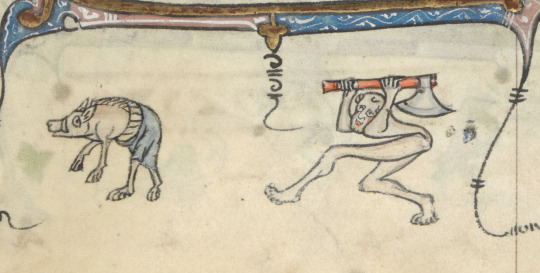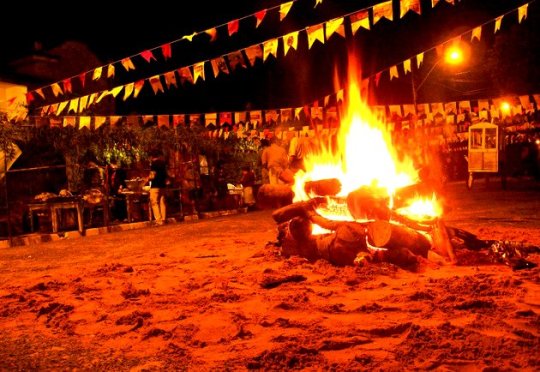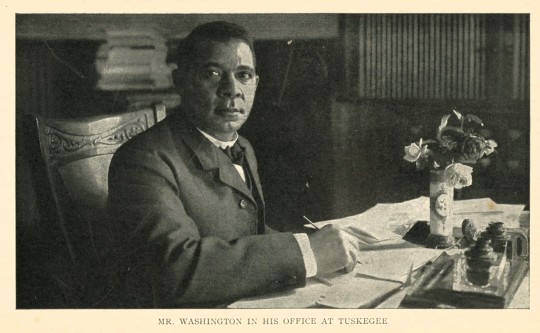poodleman
85K posts
Ancient as Anubis. Don't worry, everything's poodle. I should update this someday.
Don't wanna be here? Send us removal request.
Text
23K notes
·
View notes
Photo

when a hog steals your pants and you have to hunt it down with an ax
book of hours, use of st. omer, c. 1318-25
the british library, ms 36684, f. 31r
5K notes
·
View notes
Text
What is Festa Junina?
You may have heard the brazilian cc's talking about throwing a festa junina in the server, but what is it exactly?
Festa Junina translates to June's Party, and its origins go back to pagan midsummer and harvest celebrations. Time went on and it mixed with catholic beliefs, especially those centered around Saint Anthony, Saint Peter, and Saint John the Baptist (which is why it is also known as São João).
The tradition was brought to Brazil with colonization. It's no longer a summer fest since it's winter, but you can still see the influence (maybe the bonfires are part of it).
Nowadays, Festa Junina is known for the traditional square dancing and the food — seriously, the food is amazing (look up pamonha, cural, canjica, pé-de-moleque, bolo de fubá, cuzcuz nordestino... damn I'm hungry)! Most of it is made with corn or peanuts. Mulled wine is also a must! People dress in a "country" fashion, with straw hats, puffy dresses, and drawn freckles and mustaches. Everything is VERY colorful.
School kids will put on shows (known as quadrilhas), which usually include a "wedding" comedy sketch. In my high school, the twist was that the best man was in love with the groom. It was very dramatic. I loved it.
Here are some pictures and traditional songs! I wish we could get a mod with the foods to the server or something, but just the skins and decorations will already be so much fun!





youtube
563 notes
·
View notes
Photo

Aethelstan
Aethelstan was the first King of England, ruling from 927 to 939. The son of Edward the Elder (reign 899-924) and grandson of Alfred the Great (reign 871-899), he inherited the southern-based Kingdom of the Anglo-Saxons in 924 before capturing Viking York in 927 and establishing rule over northern England. He would do much to unite the various peoples of his kingdom, including the Mercians, West Saxons, Danes, and Northumbrians, under his rule by holding national councils, reforming laws, and encouraging unity through a common Christian faith.
His influence extended beyond England as he subdued the kings of Wales, Scotland, and Strathclyde and forged alliances with the rulers of France, Germany, and Norway. His greatest test came in 937 when an alliance of Scots, Celts, and Vikings attempted to conquer northern England. However, the defeat of the invaders at the Battle of Brunanburh marked a pivotal moment, the first great victory of the united English kingdom.
Much of what we know about Aethelstan comes from a contemporary set of annals, the Anglo-Saxon Chronicle, which provides key but limited details, expanded upon by the 12th-century historian William of Malmesbury, who claimed to be working from a now lost ancient book on the king. As Aethelstan was a great patron of William’s Malmesbury Abbey, William understandably admired the king, who, he believed, was “extremely beloved by his subjects from admiration of his fortitude and humility, he was terrible to those who rebelled against him, through his invincible courage.” He also tells us the king was “of becoming stature, thin in person, his hair flaxen,” which – according to William’s own investigation into Aethelstan’s coffin – was “beautifully wreathed with golden threads” (Sharpe, 134).
Youth
Aethelstan was born in 894 to Edward and his first wife, Ecgwynn. Edward, still a young man, was the heir to the southern Kingdom of Wessex, ruled by his father, Alfred the Great, who stoutly led the resistance against the Viking invaders, defeating them at the Battle of Edington in 878 after they had conquered northern and eastern England.
Alfred was particularly fond of his grandson. When Aethelstan was about five years old, Alfred held a public ceremony for the young prince, gifting him a scarlet cloak, a diamond-studded belt, and a sword with a golden scabbard, displaying the boy as a ‘throne-worthy’ prince. Aethelstan was then sent to the West Midlands to be fostered under the care of Alfred’s daughter, Aethelflaed, Lady of the Mercians (reign 911-918), and her husband, Aethelred, Lord of the Mercians (reign 881-911), a loyal vassal of Wessex.
Later praised as the “best-educated ruler they had ever had,” Aethelstan was taught to read and write in both English and Latin (Foot, 29). He also likely studied classical works of theology and philosophy, including Augustine of Hippo’s Soliloquies and Boethius’ The Consolation of Philosophy. Equally importantly, he was trained in riding, hunting, hawking, and Anglo-Saxon warfare.
When Edward became King of Wessex upon his father’s death in 899, his first major decision was to set aside Aethelstan’s mother, Ecgwynn, who was of minor political standing, in favour of a more prestigious consort, Aelfflaed of Wiltshire. His new bride was the daughter of Ealdorman Aethelhelm of Wiltshire (d. 897), a powerful lord who had been one of Alfred’s leading military commanders. While the union enhanced Edward’s position, it undermined Aethelstan’s, as the son of Edward’s second marriage, Aelfweard, would now boast a superior maternal lineage to his older half-brother. Aelfweard also grew up in Wessex beside his father, forming ties with the kingdom’s power brokers, while Aethelstan was far away in Mercia.
Yet Aethelstan embarked on a perfect royal apprenticeship. Now led by Aethelflaed, following her husband’s death in 911, the Mercians waged war on the Vikings of the East Midlands. As one of his aunt’s chief lieutenants, Aethelstan led troops and built fortresses on her behalf, earning him renown and respect among the Mercians. When Aethelflaed died in 918, and Mercia passed to her brother, Edward, Aethelstan continued in this role and perhaps even acted as his father’s deputy in Mercia, gaining experience in both politics and warfare.
Read More
⇒ Aethelstan
67 notes
·
View notes
Note
Just curious, is your tattoo a kosher symbol? 😅
Bc certified kosher pussy is hilarious if it is
actually wheezed when i read this, thank you. sent a screenshot to my partner and now he's going to think about it every time he sees my pussy. doesn't help that i have perfect ringlet curls when i get out of the shower 😂
no, it's a symbol from Stephen King's "The Dark Tower" series. KA, which means something akin to destiny.

23 notes
·
View notes
Text
youtube
Honoring Freedom: Juneteenth











On June 19, 1865, news of emancipation reached the last enslaved person in Galveston, Texas, more than two years after the Emancipation Proclamation. Today, Juneteenth is a celebration of freedom, resilience, and Black history and culture.
This Juneteenth, we're highlighting two powerful works by author, educator and activist Booker T. Washington (1856-1915): Up from Slavery and Working with the Hands. Both volumes were published in New York by Doubleday, Page & Company. Originally published in 1901, our copy of Up from Slavery was published in 1902. Our copy of Working with the Hands is a first edition from 1904 and is illustrated with photographs by Frances Benjamin Johnston (1864-1952), an American photographer and photojournalist.
Booker T. Washington’s landmark autobiography, Up from Slavery, chronicles his journey from slavery in Virginia to becoming one of the most influential Black leaders in the United States. The book details his early life, his education at Hampton Institute, and his founding of the Tuskegee Normal and Industrial Institute (now known as Tuskegee University) in Alabama. Washington advocates for self-reliance, industrial education, and racial uplift through dignity and hard work. This text was widely read and continues to be a foundational work in African American literature and history.
A lesser-known sequel to Up from Slavery, Working with the Hands serves as a practical and philosophical follow-up. In it, Washington elaborates on the day-to-day operations, goals, and educational philosophy of the Tuskegee Institute. The book emphasizes the dignity of manual labor and the importance of vocational training as a means of achieving Black economic empowerment in the post-Reconstruction South.
From emancipation to education, Washington’s life and legacy are deeply tied to the ongoing struggle for Black freedom and self-determination. His writings emphasize resilience, practical knowledge, and the power of building a future by hand and by heart.

-View previous Juneteenth posts
--Melissa, Distinctive Collections Library Assistant
702 notes
·
View notes
Text
The president can seize control of states’ National Guard units whenever he sees fit — even during peacetime, and even to simply back up Immigration and Customs Enforcement agents working to meet daily arrest quotas, a Justice Department lawyer argued Tuesday.
“That would be the president’s decision, based on all of the facts available to him,” Brett Shumate, the assistant attorney general for the Justice Department’s Civil Division, said when presented with that specific hypothetical scenario. Shumate was arguing at a court hearing about the fate of a temporary restraining order that would have briefly paused President Donald Trump’s federalization of California National Guard soldiers at anti-immigration enforcement protests in Los Angeles, but which the appeals court has blocked for now.
The brazen assertion of presidential power showed just how far the Trump administration is going to empower the president — and hints at what the president might do next.
Joseph Nunn, a counsel at the Brennan Center’s Liberty and National Security Program who focuses on the U.S. military’s domestic activities, told HuffPost after Tuesday’s hearing that the administration had offered an “unbelievably maximalist” position on Trump’s authority to use the military domestically. The stance, he said, was “completely incompatible with American civic traditions.”
The president’s deployment of thousands of National Guard troops and hundreds of Marines in California is the latest example of Trump working to erode a long-standing tradition that keeps the military from being used for domestic law enforcement. The Posse Comitatus Act of 1878 says the military can’t be used in that way, outside of specific exceptions like invocations of the Insurrection Act, which Trump hasn’t used.
California’s Democratic governor, Gavin Newsom, has sued over Trump’s mobilization of the state’s troops, and U.S. District Court Judge Charles R. Breyer sided with the governor last week, saying Trump’s actions had been “illegal” and ordering him to cede control of the state’s Guard back to Newsom. The Trump administration quickly appealed, and the 9th Circuit Court of Appeals put the lower court’s decision on ice, keeping the soldiers in Trump’s control. (Breyer is holding another hearing Friday about a potential longer-term pause of Trump’s federalization.)
Trump has threatened to deploy ICE for raids in major cities across the country, and the DOJ’s argument this week shows he thinks troops could come along.
And, notably, the memo Trump used to federalize California’s National Guard doesn’t say anything about Los Angeles or California specifically. Rather, it applies to any “locations where protests against these [federal law enforcement] functions are occurring or are likely to occur based on current threat assessments and planned operations.”
That memo’s language was “unprecedented in American history,” Nunn said. Even Abraham Lincoln’s invocation of the Insurrection Act at the outbreak of the Civil War applied only to Confederate states.
“The last executive to claim such a completely geographically open-ended authority to use the military domestically for law enforcement was King George,” Nunn added.
26 notes
·
View notes
Text

Stay focused. These desperate fascist are in the minority. They are fracturing.
5K notes
·
View notes








